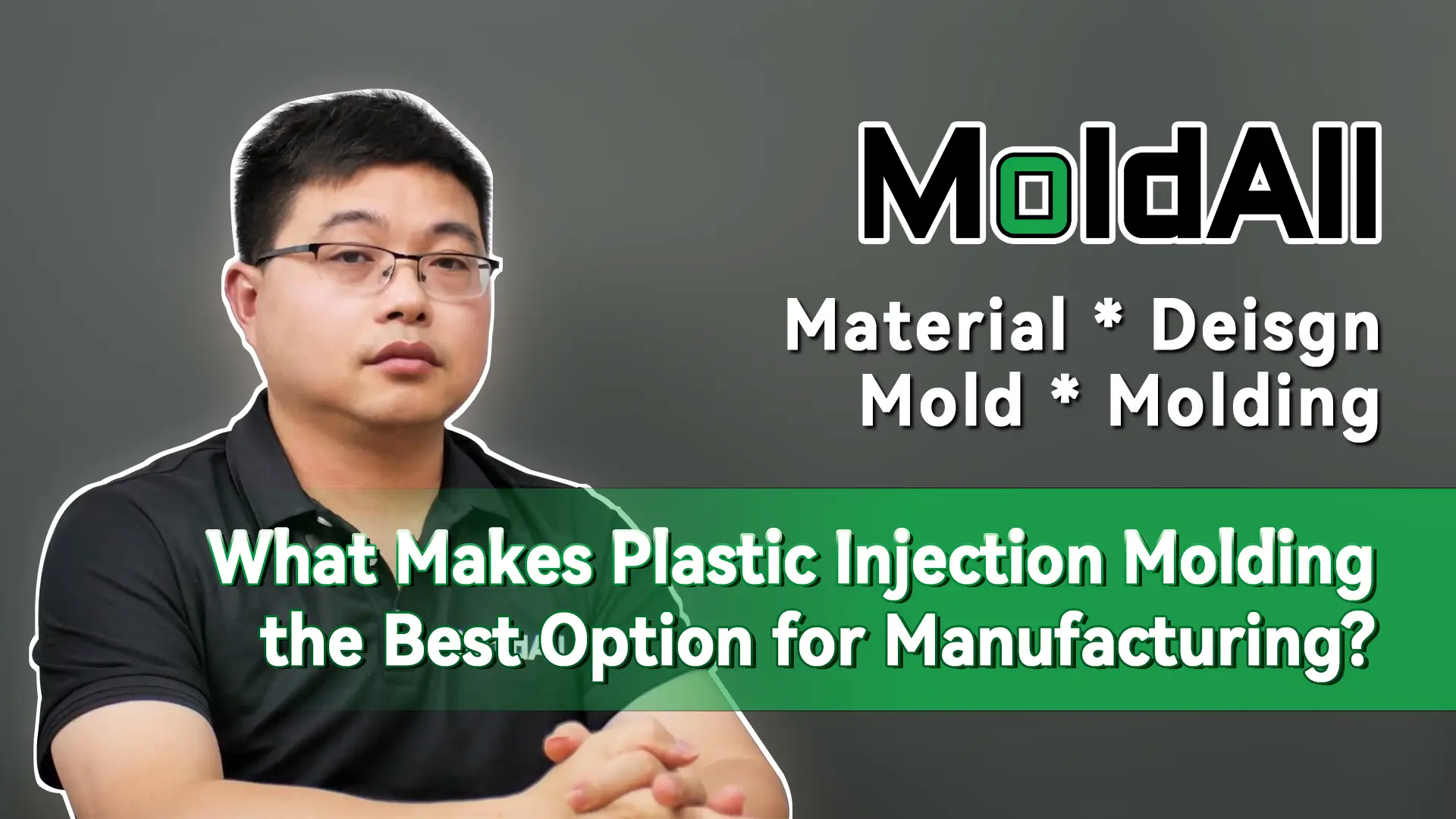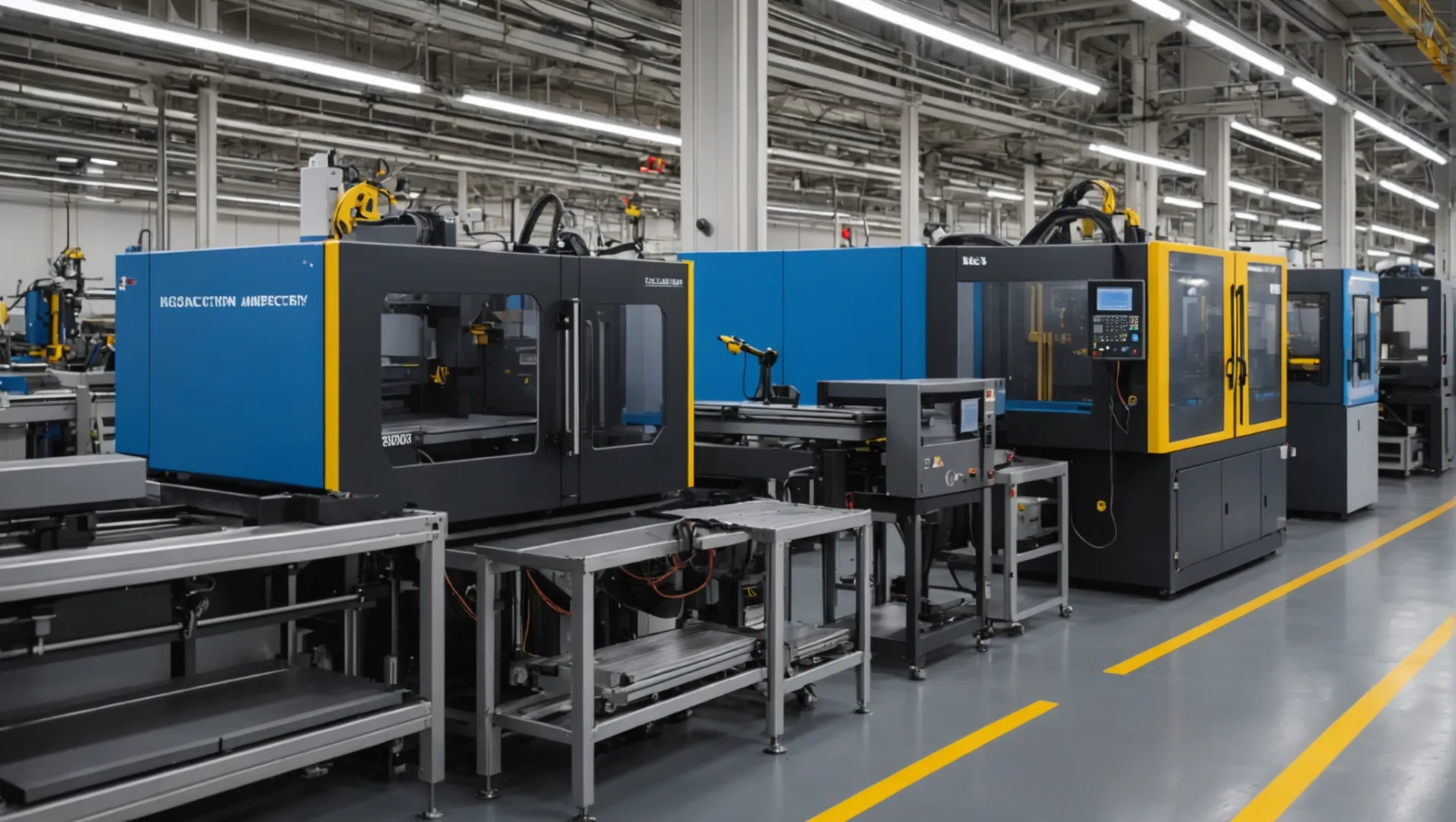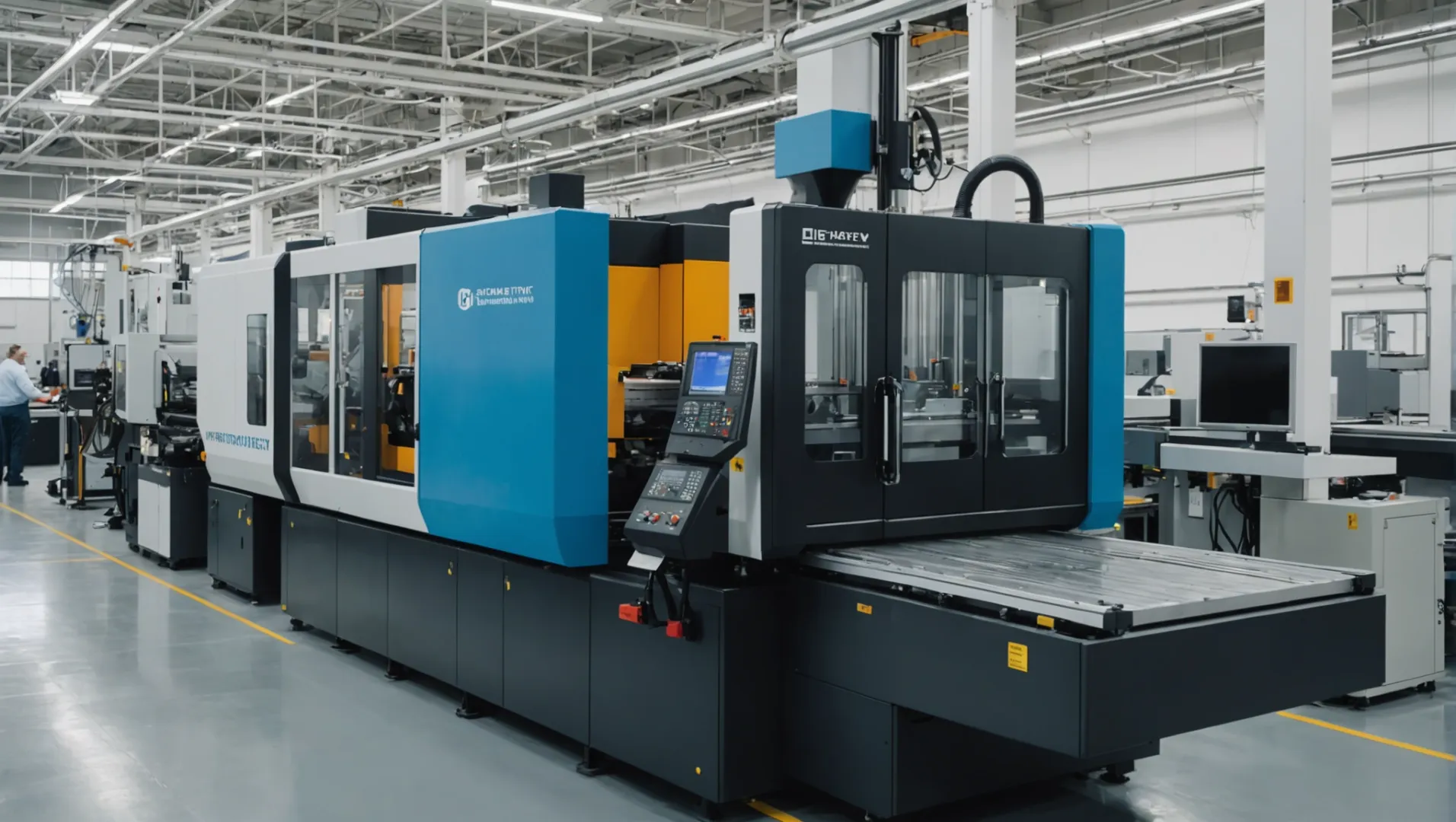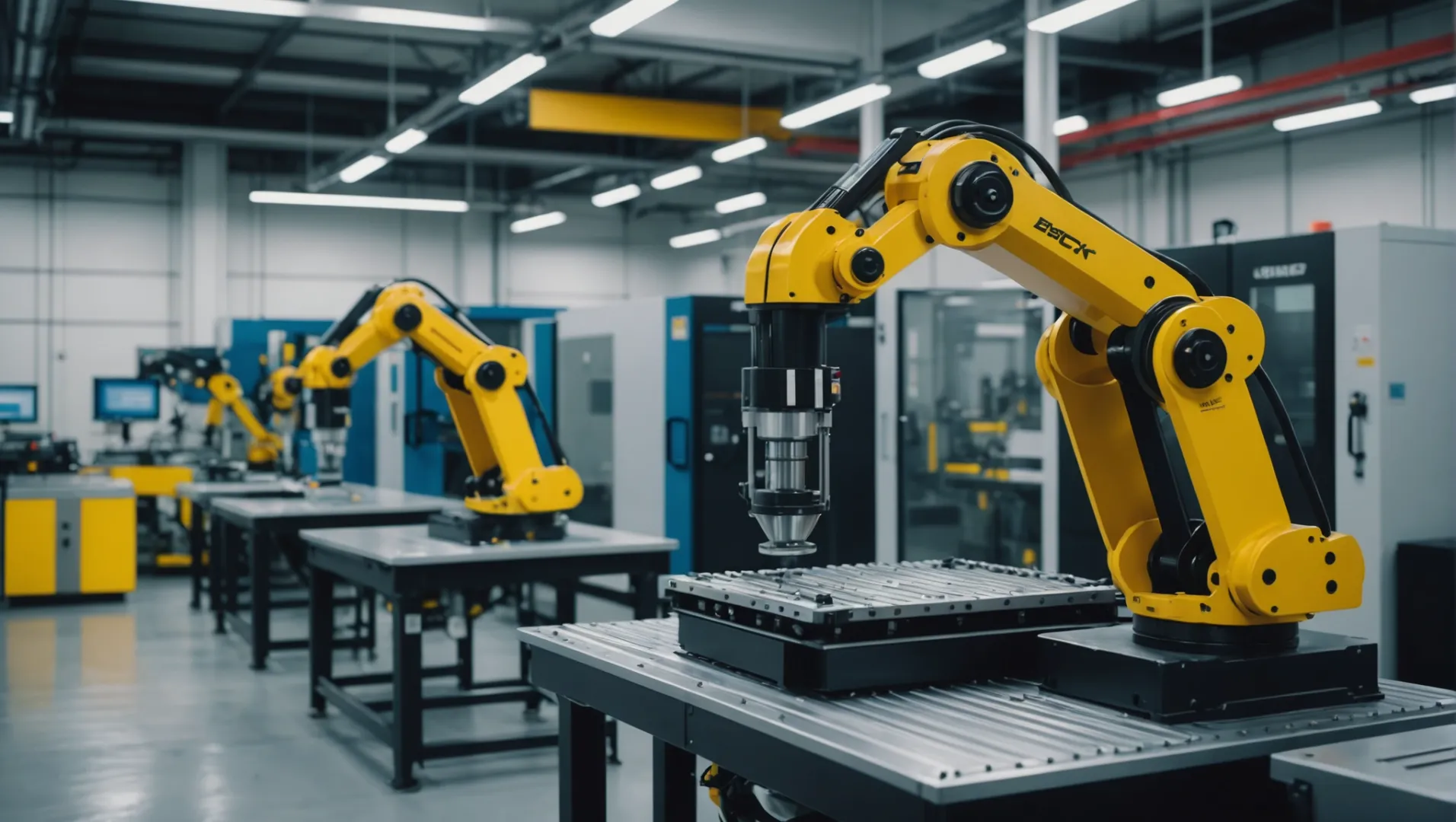
In the bustling world of manufacturing, making the right choice can feel like navigating a maze. I’ve found that plastic injection molding stands out as a beacon of efficiency and creativity.
Plastic injection molding is considered the best option for manufacturing because it offers efficient production, high cost-effectiveness, stable quality, and great design flexibility. It excels in producing complex shapes with high precision and minimal waste, making it ideal for large-scale and detailed projects.
While understanding the basic advantages provides a solid foundation, diving deeper into each aspect reveals how plastic injection molding can transform production processes. From speed to versatility, let’s explore how this method meets diverse manufacturing needs.
Plastic injection molding offers high production speeds.True
Injection molding is automated, producing large quantities quickly.

How Does Plastic Injection Molding Compare to 3D Printing?
In the manufacturing arena, both plastic injection molding and 3D printing offer unique advantages. But how do they stack up against each other?
Plastic injection molding excels in high-volume production with complex shapes and low costs per part, while 3D printing is best for prototyping, custom designs, and small batch production due to its flexibility and lower setup costs.

Production Volume and Speed
When it comes to large-scale manufacturing, plastic injection molding1 is the go-to method. It offers high production speeds, making it ideal for industries requiring thousands of identical parts. The process can produce large quantities in a fraction of the time needed by 3D printing.
Conversely, 3D printing shines in scenarios where production volume is low or customization is key. The flexibility to print one-off designs without extensive setup makes it perfect for prototyping and bespoke projects.
Complexity and Design Flexibility
Both methods allow for complex geometries. Injection molding can create intricate shapes with high precision due to its ability to mold around fine details. It excels in producing complex shapes like automotive components and medical devices.
3D printing, however, offers unparalleled design freedom. It can fabricate shapes that are difficult or impossible to achieve with traditional methods, such as lattice structures or internal cavities.
Cost Considerations
A critical aspect is cost. Injection molding2 requires significant initial investment in mold creation, making it cost-effective only for large volumes where the cost per part decreases as production scales.
In contrast, 3D printing requires minimal setup costs, making it an economical choice for small batches or highly customized parts. However, the cost per unit remains higher compared to mass-produced items via injection molding.
| Method | Setup Cost | Cost Per Part (High Volume) | Ideal Use Cases |
|---|---|---|---|
| Plastic Injection Molding | High | Low | Large-scale production |
| 3D Printing | Low | High | Prototyping, Custom Designs |
Material Utilization and Environmental Impact
Injection molding boasts a high material utilization rate, reducing waste significantly. The capability to use recycled materials further enhances its environmental credentials.
3D printing can generate waste depending on the technology used. However, ongoing advancements are improving its efficiency and reducing excess material usage.
Ultimately, choosing between plastic injection molding3 and 3D printing depends on the specific requirements of the project, including volume, design complexity, and budget.
Injection molding is cost-effective for large volumes.True
Injection molding reduces cost per part as production scales.
3D printing is ideal for high-volume production.False
3D printing is best for low-volume, customized production.
What Are the Potential Drawbacks of Plastic Injection Molding?
While plastic injection molding offers many advantages, it’s not without its challenges. Understanding these can help in making informed decisions.
The primary drawbacks of plastic injection molding include high initial tooling costs, long lead times for mold development, limitations on part design flexibility, and environmental concerns related to plastic waste.

High Initial Tooling Costs
One of the most significant disadvantages of plastic injection molding4 is the high upfront cost associated with designing and manufacturing the molds. Unlike other manufacturing processes, such as 3D printing, which can start production with minimal investment, injection molding requires a precise mold that can be expensive to produce. This initial cost can be a barrier for startups or businesses with small-scale production needs.
For example, creating a mold for a complex automotive part can run into thousands of dollars. This makes injection molding less viable for limited production runs or for prototyping phases where design changes are frequent and costly.
Long Lead Times
The process of designing and manufacturing molds can be time-consuming. It often involves several iterations and testing phases to ensure the mold meets the desired specifications. This lead time can delay product launches, making it unsuitable for industries where speed to market is critical.
In contrast, methods like 3D printing5 allow for rapid prototyping and quick alterations, providing more flexibility in the product development cycle.
Design Limitations
Although injection molding allows for the production of complex shapes, it does have certain design restrictions. For instance, intricate internal geometries may not be feasible due to the limitations in mold-making technology. Additionally, features like undercuts require special design considerations and often result in increased mold complexity and cost.
These limitations mean that designers must often compromise or alter their original designs to fit within the constraints of the injection molding process.
Environmental Concerns
Plastic injection molding primarily uses thermoplastics, which can contribute significantly to environmental pollution if not managed properly. While recycling options exist, the process itself can be resource-intensive and generate waste.
Environmental sustainability is becoming increasingly important in manufacturing. Thus, companies are encouraged to explore eco-friendly materials or innovative recycling processes to mitigate the environmental impact.
Additionally, adopting sustainable practices such as using biodegradable plastics6 or optimizing production to reduce waste can help address these concerns.
Plastic injection molding has high initial tooling costs.True
Designing and manufacturing molds are costly, impacting feasibility.
3D printing offers quicker design alterations than injection molding.True
3D printing allows rapid prototyping, enhancing flexibility.
How Can Plastic Injection Molding Benefit Sustainable Manufacturing?
In today’s eco-conscious world, sustainable manufacturing is more than a trend—it’s a necessity. Plastic injection molding stands out as a technique that aligns with these sustainable goals.
Plastic injection molding supports sustainable manufacturing by minimizing waste, using recycled materials, and enabling energy-efficient production. Its precision reduces material usage, while its adaptability allows for the incorporation of eco-friendly plastics, contributing to a greener production process.

Waste Minimization and Material Efficiency
One of the primary benefits of plastic injection molding in sustainable manufacturing is its ability to minimize waste. The process is highly efficient in terms of material utilization, as it precisely fills molds with little excess. This reduces the amount of scrap material produced compared to other methods like CNC machining7, where material is often removed from a larger block.
Additionally, the ability to use recycled plastics in the injection molding process further enhances its sustainability. Manufacturers can integrate post-consumer recycled materials into new products, effectively reducing the demand for virgin plastics and minimizing the environmental impact.
Energy Efficiency in Production
Plastic injection molding is also lauded for its energy efficiency. The process can be highly automated, which means less energy is wasted on manual labor and machine downtime. Modern injection molding machines are designed to consume less energy and can operate continuously, thus maximizing output while minimizing energy usage.
Moreover, advancements in mold design and machine technology have led to reduced cycle times, further decreasing the energy required per part. This makes injection molding a preferred choice for eco-friendly manufacturers looking to cut down on carbon emissions.
Integration of Eco-Friendly Materials
The versatility of plastic injection molding allows for the integration of eco-friendly materials without compromising on quality or performance. Biodegradable plastics, bio-based plastics, and other sustainable materials can be molded into complex shapes, offering an environmentally friendly alternative to traditional plastics.
For example, automotive and consumer electronics industries are increasingly opting for bioplastics8 in their injection molding processes to meet both regulatory requirements and consumer demands for greener products.
| Advantages of Injection Molding in Sustainability |
|---|
| High material efficiency with minimal waste |
| Ability to use recycled and eco-friendly materials |
| Energy-efficient production processes |
Long-Term Impact on Sustainable Practices
By choosing plastic injection molding, manufacturers can significantly contribute to sustainable practices in the long term. The reduced material waste, combined with the energy-efficient nature of the process, aligns perfectly with global efforts to decrease industrial environmental footprints.
Furthermore, the potential for incorporating advanced materials ensures that products remain durable and reliable while still being environmentally responsible. As the demand for sustainable products continues to rise, plastic injection molding provides a robust solution that balances efficiency with ecological considerations.
Plastic injection molding minimizes material waste.True
This process precisely fills molds, reducing excess material.
CNC machining produces less waste than injection molding.False
CNC machining removes material from a block, creating more waste.
What Innovations Are Shaping the Future of Plastic Injection Molding?
Plastic injection molding is continuously evolving with new technologies, enhancing efficiency and sustainability.
The future of plastic injection molding is being shaped by innovations such as advanced automation, smart manufacturing, sustainable materials, and enhanced simulation software. These technologies are revolutionizing how products are designed and manufactured, making processes faster, more efficient, and environmentally friendly.

Advanced Automation
Automation is a key innovation driving the future of plastic injection molding. Robots and automated systems are increasingly being integrated into the production line, facilitating tasks like part removal, quality inspection, and packaging. This reduces human error and increases precision.
For instance, robotic arms can efficiently handle repetitive tasks, freeing human operators for more complex problem-solving roles. This not only speeds up production but also ensures consistent quality.
Smart Manufacturing with IoT
The Internet of Things (IoT) is transforming plastic injection molding into a smart manufacturing process. IoT devices collect real-time data from machines, providing insights into performance and maintenance needs. This data-driven approach allows manufacturers to optimize operations and prevent downtime.
With IoT, manufacturers can achieve predictive maintenance, anticipating machine failures before they occur. This ensures smoother operations and minimizes unexpected disruptions.
Sustainable Materials
The push towards sustainability is leading to the development of eco-friendly materials for injection molding. Biodegradable plastics and recycled materials are gaining popularity as industries aim to reduce their carbon footprint.
For example, the automotive industry is exploring the use of bioplastics to create lightweight components, which can improve fuel efficiency and reduce emissions.
Enhanced Simulation Software
Advanced simulation software is revolutionizing the design phase of injection molding. These tools enable engineers to model and test product designs in virtual environments, predicting potential issues before production begins.
Simulation software enhances the accuracy of mold designs, ensuring products meet specifications while minimizing waste. This technology significantly shortens the development cycle and improves overall efficiency.
Collaborative Robots (Cobots)
Collaborative robots, or cobots, work alongside human operators to enhance productivity in plastic injection molding. Unlike traditional robots, cobots are designed to be safe around humans without the need for extensive safety barriers.
These robots assist with complex assembly tasks, improving workflow efficiency and allowing for greater flexibility in manufacturing processes.
As these innovations continue to evolve, they promise to make plastic injection molding a more adaptable and sustainable manufacturing method. By embracing these advancements, industries can remain competitive in an ever-changing market landscape.
IoT enables predictive maintenance in injection molding.True
IoT devices collect real-time data, allowing for predictive maintenance.
Cobots require extensive safety barriers in manufacturing.False
Cobots are designed to be safe around humans without safety barriers.
Conclusion
In summary, plastic injection molding can significantly enhance production efficiency while maintaining quality. It is a versatile solution that adapts to evolving market demands, making it an invaluable asset for manufacturers.
-
Learn about injection molding’s efficiency and suitability for large-scale production.: What are the advantages of injection molding? · 1. Efficient high production · 2. Low cost per part · 3. Repeatability · 4. Large material choice · 5 … ↩
-
Explore detailed cost comparisons to make informed manufacturing decisions.: Product iteration with 3D printing is faster and less expensive compared to injection molding. If you identify a design flaw once a part is 3D … ↩
-
Understand how injection molding can be environmentally friendly with recycled materials.: Injection moulding can have various environmental impacts, depending on the materials that are used, the process itself, and the waste that is generated. ↩
-
Explore why initial costs can impact project feasibility.: The short answer: plastic injection molds cost anywhere between $100 for a 3D printed low-volume injection mold to $100,000+ for a complex multi-cavity steel … ↩
-
Learn how 3D printing offers flexibility in design changes.: Longer turnaround times (5-7 weeks for simple parts) · High volume production runs (1,000+ parts per run) · Final part design (no more prototyping) · Parts of any … ↩
-
Discover environmentally friendly alternatives in manufacturing.: Types of Biodegradable Plastic Resin · 1. Thermoplastic Starch-Based Plastics (TPS) · 2. Polyhydroxyalkanoates (PHA) · 3. Polylactic Acid (PLA). ↩
-
Learn about how CNC machining produces more waste than injection molding.: While CNC Machining involves direct material removal through precise cutting, plastic injection molding relies on injecting molten material into … ↩
-
Discover how bioplastics are transforming the automotive sector.: Bio-based plastics have reached maturity as a suitable ma- terial for a large number of automotive applications, offer- ing high-performance and a unique … ↩






